GLOSSARY

Unlock the power of human resource (HR) lingo with our comprehensive glossary. Packed with essential terms frequently used by HR professionals, this knowledge hub is here to empower you. Dive in, learn and put your newfound knowledge into action. Take advantage of this invaluable resource today!
#
30/60/90 Day Plan
A 30/60/90 Day Plan is a structured roadmap designed for new employees to navigate their initial months in a company effectively. It allows individuals to outline their goals, objectives and critical deliverables within specific timeframes: the first 30, 60, and 90 days of their employment or transition into a new role in the event of a promotion or lateral move.
A
B
Boolean Search in Recruitment
Boolean Search is a method of navigating search engines that uses Boolean mathematical logic and words such as “and,” “or,” and “not” to achieve powerful and focused results. Boolean Search can be used by recruiters to search various hiring platforms (LinkedIn, Google, candidate portals, etc) for the best potential candidate matches.
C
Candidate Sourcing
Initiating any outbound recruitment process begins with pinpointing suitable candidates for vacant positions. Given that this phase typically involves extensive research, it’s easy to overlook the manual and time-consuming nature of candidate sourcing. Recruiters commonly spend over 13 hours per week sourcing for a single role, underscoring the potential for significant reductions in time-to-hire and heightened productivity through streamlining. Various Recruiting Automation solutions are available to assist companies in automating the identification of passive candidates possessing the requisite skills and backgrounds.
With the preceding section providing orientation, those eager to delve into Recruiting Automation are gearing up for the journey ahead. Rival Recruit and Engage are designed to aid in planning for what lies ahead, assisting in your Recruiting Automation strategy, and will help advocate for its adoption within your organization.
Compensation
Compensation is agreed-upon payment to an employee for work or services performed. Also known as “salary” (if a set amount of money per calendar period) or “wage” (if an amount of money offered per hour of work performed). A “Compensation Package” encompasses not just base compensation, but benefits as well.
D
E
Employee Referrals
Employee referrals are one of many recruitment methods for filling open job positions. Essentially, current employees of a company recommend candidates for open positions within the organization. These referrals will often involve the employee endorsing someone they know, such as a friend, family member, former colleague, or acquaintance as a suitable candidate for a job.
Employee referrals are a great way for companies to hire effectively! Reasons include the likelihood of finding candidates who fit the company culture, as well as potential cost savings and faster hiring processes compared to traditional recruiting methods.
Typically, human resources teams will create their own employee referral programs as well. Companies often offer financial rewards, bonuses, or other internal reward program incentives to employees who refer candidates that make it through the hiring process. These incentives can vary in amount depending on the level of the position or the critical need for a specific skill set.
For more reading, the Academy to Innovate HR has a great post on spicing up employee referral programs.
Equal Employment Opportunity (EEO)
Equal Employment Opportunity (EEO) is ensuring that hiring is done without discrimination on the basis of legally protected classes, including race, color, religion, sex, age, national origin, and physical or mental disability.
Any organization with over 15 employees (including full-time, part-time, temporary, and seasonal employees, work program placements, and volunteers) who have had this number of employees (or more) for over 20 months are subject to Equal Employment Opportunity laws.
Employee Socialization
Employee Socialization is a part of the onboarding and orientation process that works to integrate new hires into the workplace socially and culturally. Examples include meet-and-greets with other departments, introductions to company clubs, and outside-the-office activities like corporate happy hours.
A job is much more than just typing words into a computer, giving a presentation, or hammering a nail – it’s being part of an organization full of people that need to work together and get along in order to achieve success. So when an employee isn’t given opportunities to engage with other members of the organization, get to know them as individuals, and learn all their skills, positive traits, and personality quirks, that employee is far more likely to struggle, work below their abilities, or leave the organization quickly. Employee Socialization seeks to engage all employees with each other and with the organizational culture in order to avoid poor performance and high turnover.
F
Functional Job Analysis
A method of analyzing jobs that seeks to gather information about all that goes into a particular role and what is required from a worker in that role, and qualitatively determine the best fit for the job. Functional Job Analysis (FJA) currently covers seven different categories for each job:
- Things (physical tools required to perform the job)
- Data (information relevant to the company that a worker must analyze)
- Worker Instructions (processes and procedures a worker is expected to follow)
- Reasoning (the need for a worker to think critically and make smart decisions)
- People (how well an employee must work with others)
- Math (how much a worker must work with numbers and mathematical skills)
- Language (a worker’s ability to read, synthesize, and communicate information effectively)
G
Generative AI
In the landscape of human resources, technological advancements constantly reshape traditional practices, enhancing efficiency and effectiveness in talent management. One of the most promising developments in this realm is the integration of generative artificial intelligence (AI) systems, which are poised to revolutionize how HR professionals operate.
Generative AI, a subset of artificial intelligence that focuses on creating new content, such as text, images, or even entire scenarios, has gained significant traction across various industries. In HR, its applications are diverse and impactful, offering innovative solutions to age-old challenges.
One of the most immediate benefits of generative AI in HR is streamlining the recruitment process. Traditionally, recruiters spend countless hours sifting through resumes and conducting initial screenings to identify suitable candidates. However, with the assistance of AI-powered tools, this tedious task can be automated, saving time and resources while ensuring a more thorough analysis of applicant qualifications.
To learn more about how AI is being utilized in the HR landscape, you can view our on-demand webinar on the same topic.
H
Human Resources / HR
Human Resources (HR) is a department or individual within a company who is responsible for handling the company’s workforce needs, including leading the recruitment and hiring process, managing employee benefits, and dealing with potential legal issues such as harassment and discrimination claims.
Human Resource Information System (HRIS)
A Human Resource Information System (HRIS) is a system or platform used by a human resources department to catalogue, organize, and manage information related to a company’s workforce.
This can include, but is not limited to:
-
- HR core functions
- Onboarding
- Payroll
- Benefits administration
- Employee information
- Attendance and timesheet tracking
- Regulatory compliance
-
Hiring Manager
The hiring manager is whom a candidate will report once the hiring process is complete. A hiring manager often collaborates with Human Resources to develop an appropriate job description and listing and will be a driving force in the interview process, as well as being the person that makes the final decision on which candidate to hire.
I
Induction
Induction is a component of the onboarding process that involves fully integrating a new hire into the company and helping them fully understand the company’s culture, values, and goals as well as how their specific role contributes to those attributes. Induction typically begins once a new hire starts digging into their daily work and can last weeks or even months.
J
Job Leveling / Levels
Job leveling is a process involving clearly defining the roles, responsibilities, and hierarchical positioning for each position within an organization. Beyond a simple job description, the job leveling process should make it clear what the career path and opportunities for advancement will look like for an employee in any given role.
Job Description
A job description is a document outlining everything a potential hire (or current employee) may need to know about a particular position, including roles and responsibilities, compensation and benefits, necessary qualifications, and information on the organization’s mission, values, and culture.
K
L
M
O
Onboarding Documents
In human resources, the term “onboarding documents” can involve a wide range of different documents. Not to be mistaken with just a stack of papers to sign; rather, they serve as a gateway to a successful integration of new employees into a company’s culture, processes, and expectations. Below, we’ll cover what goes into onboarding documents and why they are crucial for employers and employees.
Onboarding
Onboarding is the process of introducing a new hire to their role within an organization. The onboarding process typically begins on a new hire’s first day and covers administrative responsibilities (like signing up for a health care plan or setting up direct deposit), introductions, training, and the first several months of work as the employee gets up to speed.
A good Onboarding process should not only cover the administrative tasks outlined above, but also provide full training, a proper introduction to the office and the new hire’s coworkers, regular performance check-ins with the hiring manager, a clear road map for what success looks like in their first month, 3 months, and year at the job, and opportunities for new hires to integrate socially with the rest of the staff. In short, the Onboarding process should include anything a new hire needs to be legally recognized, confident, and like a real member of the team.
Offboarding
Offboarding is the transition process as an employee leaves the company, whether through voluntary quitting, layoffs, or being fired. This can involve reassigning tasks, conducting exit interviews, revoking access credentials, and returning company equipment.
There are many reasons why your organization should have an Offboarding process every bit as robust and consistent as your Onboarding process. It helps avoid any unnecessary legal risk by ensuring the whole process is well-documented and applied equally to all employees; it minimizes the chances of security or data breaches due to disgruntled former employees or lost information; it ensures that projects, contacts, and work-in-progress is not left hanging; it can even help your organization maintain a positive reputation.
P
Pre-Boarding
Pre-boarding is an extension of the onboarding process that serves to make a new hire feel welcomed by the organization before their first day on the job. This can include small touch points such as welcome emails, what to expect from the onboarding process, and even simple info such as where to park.
Q
R
Recruiting Automation
Recruiting automation, a facet of Human Capital Management (HCM) software, empowers companies to streamline recruitment processes, enhance recruiter efficiency, expedite hiring timelines, reduce hiring costs, and elevate the caliber of talent within their organization. By automating various recruitment tasks and workflows, companies can bolster their competitive edge in talent acquisition amidst heightened competition for top-tier candidates.
In recognizing the limitations of traditional hiring methods in today’s fiercely competitive talent landscape, forward-thinking companies leverage recruitment automation technologies to achieve superior outcomes within tighter timeframes and with optimized resource management. AI is also aiding in these processes.
Recruiter / Recruiting
A recruiter is a professional whose job is to research, discover, and engage with potential job candidates on behalf of a hiring organization. Recruiters typically reach out to the strong candidates and conduct first-round interviews, at which point the process is handed off to the hiring manager or department head. A recruiter can be internal to an organization or contracted through a recruiting agency.
S
Salary Transparency
Salary transparency is the practice of being open about salary bands with potential job candidates.
Salary Transparency is a practice where an organization will list a wage, salary, or Salary Band up-front as part of the recruiting/hiring process, rather than holding it back for the job offer or requiring applicants ask first. Organizations that practice Salary Transparency will often see more interest in their job openings, less risk of push-back from applicants, and a smoother hiring process (since applicants will know up-front of the Salary Band is suitable for them).
T
U
Upskilling
Upskilling is employee training that works to develop and improve an employee’s existing skills.
Upskilling has several benefits. It allows employees to learn new skills to make their own jobs easier and less-stressful, while also making themselves into stronger candidates for future jobs or promotions. In return, employers reap the rewards of a more skilled employee who can work more efficiently, is up-to-date with their industry knowledge, and is in a better position to be promoted internally – saving the costly process of hiring an outsider to fill a higher-up position.
Up-Boarding / Employee Training
Up-Boarding and Employee Training is training a promoted employee for their new role as if they were a new hire, rather than assuming automatic proficiency.
Up-Boarding is most necessary when someone is transitioning to a largely different position than the one they have; one that would require skills not used in their previous position. An example might be an employee transferring to an entirely new department within the organization (such as a sales person moving into an accounting role), or someone with no managerial experience being promoted into a role with direct reports.


















